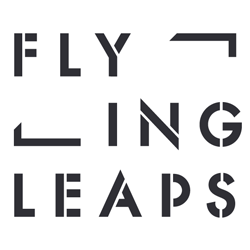One-Way Street? Dreams Versus the Inexorable March of Capital in London Winterreise by Rut Blees Luxemburg
In Schubert’s original Winterreise a lovelorn, despairing individual is compelled to traipse as a stranger wherever the road leads, questioning ‘his identity, the conditions of his existence – social, political and metaphysical – and the meaning of life.’[1] Blees Luxemburg’s film takes us on a contemporary winter’s journey tracking past the footings of Old Street, The City – London’s bailed out financial district – Bishopsgate development sites, an Occupy movement’s encampment only to conclude at the more Brutalist skirts of today’s London Wall.
‘The film is a document of the city […] and at the same time a visual commentary or attempt to make visible certain connections, histories and seemingly long abandoned dreams.’[2]
In a striking opening scene, set to the rampant fanfare of Hans Zender’s arrangement of Schubert’s first Winterreise song Gute Nacht, we are eye-to-eye with rough-hewn stone and pull back to see an image of the remains of the Temple of Jupiter in Baalbeck, Lebanon.[3] From the eerie glow of one site of carnage we find ourselves transported to Old Street on a Friday night. Walking with revellers past white ceramic tiles beneath a Network Rail bridge, we pause in front of a sign ‘Stop – Graffiti and Flyposting. You Are Being Filmed’.
London Winterreise situates the viewer’s gaze as gliding along the kerbside. The width of the pavement, from the nearside to adjacent wall, hoarding, colonnade… This is the prevailing depth of field, enacting a passage through the urban night that is often intrusively up-close and uncomfortable even if those we are passing are usually oblivious: checking their phones, looking out for the bus, workers and watchmen staring into space. One of the things so unnerving about the film is that, set against the parade of monumental architecture, most of the people in it seem so transient, flimsy, as if a sudden squall could empty the streets altogether.
When Blees Luxemburg changes the pace of her trail through the city we see a whizz of giddying grey stone plinths, a slither of the Bank of England that gives way to an opposite tableau. This skidding past the foundation of power slips into what some commentators have referred to as more of a moment than a movement proper. The Occupy settlement, leaderless and ramshackle site of resistance with its ad hoc, heartfelt proclamations: ‘The World is in a much bigger mess than this camp.’
In Blees Luxemburg’s film, when we crawl past the Occupy camp a second time, gone is the caliginous carnival atmosphere and what’s left of the Finsbury Square protest camp is a tattered wasteland. A pathetic scrawl caught between Heras fencing and the anonymous lights of office buildings in the background. In a preceding passage of the film, as the soundtrack and imagery throbbed red-hot, going at destruction/construction hammer and tong, the city is being wrought in hell-like forging, casually overseen by a sentinel in high-vis. jacket, hard-hat askew. It seemed inconceivable that all this activity, this commercial ‘achievement’ could so quickly wither away.
We cut to a view of St Pauls, 30 St Mary Axe and the Pinnacle skyscraper rising from the bowels of Bishopsgate. But this image is spectacle, and speculation: the developer’s advertisement of what is promised. Reflected light crackles across this faux skyline.
After the storm, after the erasure of alternative voices, Blees Luxemburg’s trawl past London’s Greco-Roman architectural motifs gives way to their Brutalist, minimal heirs. The possibly productive ‘disorder’ of the Occupy camp has been razed and we continue on our journey only now with a different aesthetic. What we are left with look like concrete planters, empty vessels. Blees Luxemburg, however, won’t brook any suggestion that imagery in the film, the more often than not truncated space might be equated with absolute despair:
‘I think the work, […] as a record and visual interpretation of this time, giving a visual presence to the urban transformation we are witnessing in London now, is anything but impotent.’[4]
Our journey finally comes to rest on the faintest shadow of foliage, trace of arcadia, flittering against a louvered concrete facade. It seems that the human presence and social concerns are fleeting against the heft of state, finance and its bureaucratic, architectural incarnations. Recall though the first image, architecture named after the largest planet, Jupiter, god of the sky. Even that legend didn’t in the end save the temple or the civilisation it celebrated from overthrow and eventual ruin.
Adrian Burnham
[1]‘Ian Bostridge on Singing Schubert’s Winterreise’ in The Guardian 03.01.15
[2]Correspondence w. Rut Blees Luxemburg 06.02.15
[3]The photographic light box is a work by Mustafa Hulusi
[4]Correspondence w. Rut Blees Luxemburg


